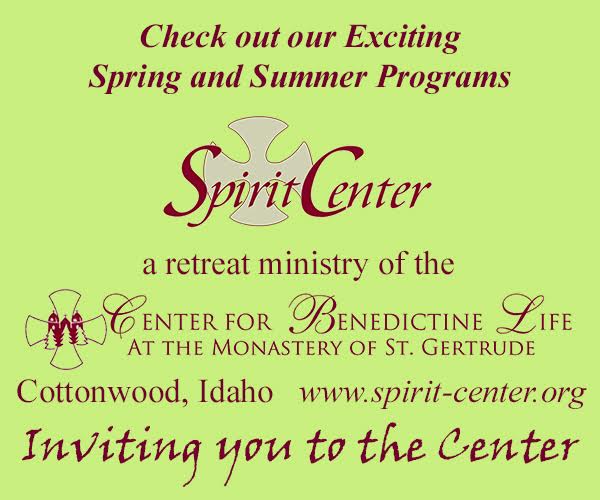This is part 1 of an 8-part series
By Rodney Frey
In dedication and with a heartfelt thanks to Tom and Susie Yellowtail
Author’s Note: As a lay chaplain, this personal essay will relate how my experiences with Native American mentors and a vow I made for the health of my son, along with my own journey with cancer have molded an approach to jumpstarting relationships with perfect strangers. I’ll also explore how those influences informed my teaching and research, and the General Education curriculum at the University of Idaho, with implications for us all. Considered will be some of the values and aspirations, elements and capacities that contribute to effective interpersonal relationships. Key words: empathy, diversity, shared-in-common and intentional. This essay will be divided and presented in eight segments.
Part One
I suspect most of us, if not all, have experienced walking the halls of a hospital. Hopefully as a visitor, to bring support, perhaps a little joy to a loved one or a friend. As you’ve done so, have you wondered about those you pass by, with doors open, open to perfect strangers?
In my capacity as a volunteer Lay Chaplain at Gritman Hospital, in Moscow, Idaho, I’ve been doing some hall walking. Walking that leads me into the rooms of perfect strangers. Each is in some stage along a journey, a journey inevitably involving a crisis, some getting better, others, not so. And I ask myself as a novice chaplain, how can I create a relationship in a moment’s notice to best serve them, offer an ear, make a connection, speak the right words, even a prayer? Wanting to do so with honesty and sincerity, with as much meaning as I can, how can I jumpstart a relationship with a perfect stranger?
So, I listen and try my best at being attentive, picking up this cue, that reference. I discover a range of crises, each stranger’s healing journey different from the next, each expressed uniquely. A feeling of joy or simply relief upon being notified that he or she is about to be discharged after a surgery or long illness. Or in one’s final hours, resignation or perhaps fear, and then there’s the grief of his or her loved ones. From calm to heightened anxiety – a multitude of possible human expressions. And with each stranger, he or she carries a range of possible worldviews, of possible stories with them. From atheist to no affiliation or agnostic, to Catholic, Protestant or even Muslim, to spiritualist, a Buddhist, evangelical, to Jewish, a fundamentalist “end-days is upon us,” to someone practicing a Native American tradition, to even a “wizard.” And within each of these stories are other distinct sub-stories, for example, a Quaker or Seventh-day Adventist. Each different from the next, each unique from myself. So, I ask, what is the quality, the capacity, the stuff that I need to bring with me when I enter the rooms of perfect strangers to help create a relationship meaningful to each?
Doesn’t it all begin with a story? At the very core of our interactions with one another, are we not the stories we tell? Are we not the weavers of narratives – Homo narrans? The following is a story spotlighting what I try to bring with me when I enter the room of a stranger. The Apsáalooke, translated as “Children of the Large Beaked Bird,” also called the Crow Indians of Montana, have a term, basbaaaliíchiwé, “telling my story.” The term speaks to the importance of re-telling the special events we’ve experienced that have transformed us – sharing them with friends and family, even with strangers, such as yourself, you the reader. In the act of re-telling, the experienced lessons and any insights can provide possible gifts for a listener, something meaningful he or she can hold onto. This is not to say that my story is any more noteworthy than another’s. There are always choices we make at each juncture in our unfolding stories, each of us digging deep with integrity. This is my story of choices, a story from me to you.
It began 44 years ago, in 1976. I was walking the halls of another hospital, but totally oblivious to the strangers in the rooms I passed. On that occasion I was only concerned about one room, one person, Matt, my 1-year-old son. Matt had suddenly become unconscious, and his mother and I rushed him to the hospital. As I held him in my arms, close to my heart, this 25-year-old father reached out in the most meaningful way I could think of at that moment. I made a pledge to the Creator to go without food or water for three days, in the Apsáalooke manner of supplication and sacrifice, for my son. To fast on an isolated hill, alone, in prayer. While Matt soon recovered, I sought to keep my vow. With little comprehension and no experience in the ritual process that I had pledged to do, my love for a son and trust in a father would lead the way.
Now this needs a little history as well, my story going back two more years, to the summer of 1974. I was brought up in a loving, white middle-class family, raised and baptized in the Methodist Church, with the teachings and parables of Jesus remaining vital, and while in graduate school, discovered the Unitarian community. But that summer of ‘74 changed everything for me, unequivocally expanding the possible forks in the roads of my world. I was a young ethnographer, working with the Apsáalooke on an applied project sponsored by the Crow Tribe and the Indian Health Service. As I looked to interview tribal members, two names consistently came up – Tom Yellowtail and his wife Susie. They agreed to help, and graciously introduced me to their lives and to the Ashkísshe Sundance Way of Life. Tom was a humble, self-effacing man, in his early seventies, who chose his words and actions with deliberation. Never a harsh word was spoken of another. A healer, always attentive to those in need, one who leads the Sundance rituals, Tom was an akbaalíak, “one who doctors.” Susie was a renowned advocate of Indian issues, particularly regarding Native infant and child adoption, who spoke her mind with ease. She traveled widely, speaking before different audiences, serving as a chaperone for Miss Indian American, as well as an advisor on U.S. Presidential Commissions. Out of those initial insightful interviews grew something special.
The Ashkísshe Sundance is an annual ceremony involving from 75 to over 100 men and women, who, for three, sometimes four days pray, dance, blow Eagle-bone Whistles, and go without food or water under the 100-degree heat of the July sun in eastern Montana. Each has made a vow, each vow distinct from the next; each dances with his or her own style and pace, each slightly different from the next. Their vows put to action are understood as a “gift” to the Creator so a loved one might be helped, or a challenge met. Invited by Tom to look on, I watched from outside the Sundance Lodge, at its door, which opened to the east, aligned to the morning sun. On the faces of the dancers and in their actions were revealed to me something altogether self-effacing, authentic and sincere, faces and actions focused and intentional. The Apsáalooke call it díakaashik, “doing it with determination.” In front of that door, as I witnessed within, I fell to my knees and tears filled my eyes.






